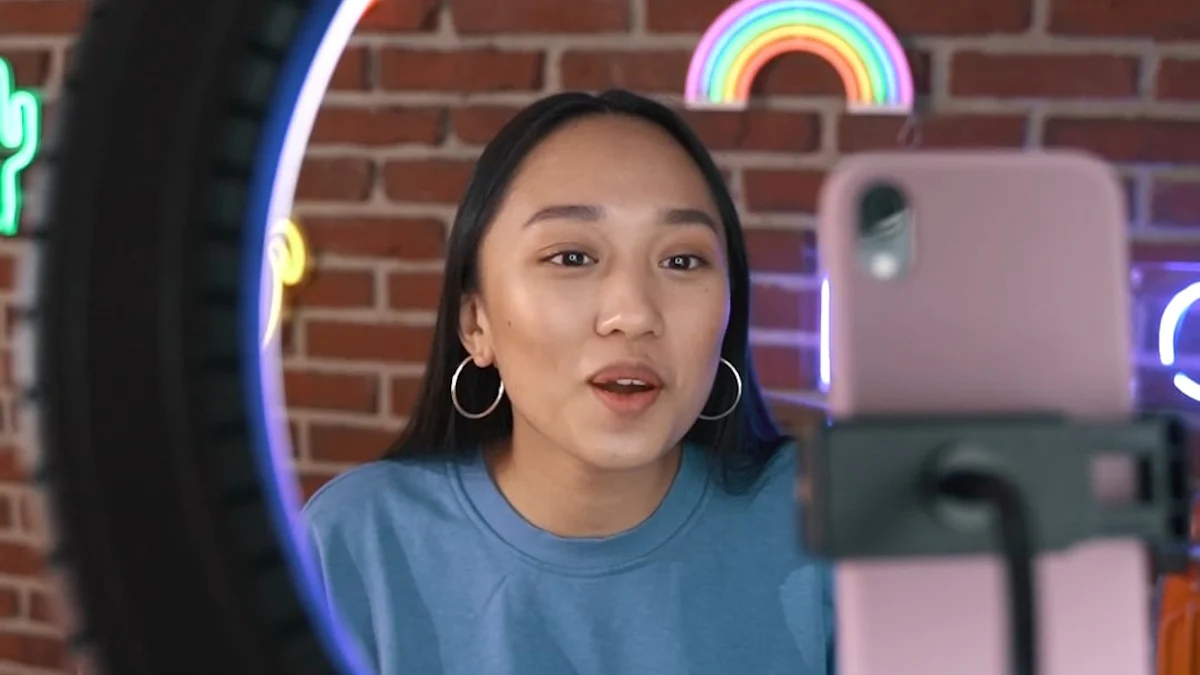The Pros and Cons of Smaller Influencers for ROI

Smaller influencers, like nano-influencers with fewer than 10,000 followers and micro influencers ranging from 10,000 to 100,000 followers, are reshaping influencer marketing. These creators excel at building authentic connections with their audiences, often achieving engagement rates as high as 4.4% for nano influencers and up to 7% for micro. Their ability to deliver targeted campaigns has made them a key focus in ROI influencer marketing. While their reach may be limited compared to larger influencers, their cost-effectiveness and trustworthiness spark an ongoing debate about the pros and cons of influencer marketing.
The Pros of Working with Micro-Influencers

Higher Engagement Rates
When you collaborate with smaller influencers like micro and nano influencers, you tap into their ability to foster a personal connection with their audience. This connection often translates into a higher engagement rate. Studies show that micro influencers achieve engagement rates between 7% and 20%, significantly outperforming larger influencers, who average around 5%. Their followers actively like, comment, and share posts, creating a sense of community around the content. This level of interaction not only boosts visibility but also drives meaningful conversations about your brand. If you're aiming for high engagement rates, micro-influencers are a smart choice.
Cost-Effectiveness in ROI Influencer Marketing
One of the biggest pros of working with micro-influencers is their affordability. They offer a lower cost per post compared to macro-influencers, making them a more cost-effective option for brands with limited budgets. Despite their smaller reach, they often deliver a greater ROI due to their ability to connect deeply with their audience. For example, a campaign with multiple micro influencers can cost less than hiring one celebrity influencer while yielding better results in terms of engagement and conversions. This makes them an ideal choice for brands looking to maximize their investment in ROI influencer marketing.
Authenticity and Trust with Audiences
Micro influencers excel at building stronger connections with their followers because they appear more authentic. Their content feels relatable and genuine, which fosters trust among their audience. Unlike larger influencers, who may seem out of reach, micro influencers maintain a personalized connection with their followers. This authenticity makes their endorsements more believable, increasing the likelihood that their audience will take action on recommendations. If your goal is to build credibility and establish a loyal customer base, micro influencers can help you achieve that.
Niche Targeting for Specific Campaign Goals
Micro influencers shine when it comes to targeting specific audiences. Their smaller, more focused followings often revolve around particular interests, hobbies, or industries. This makes working with micro-influencers an excellent choice if your campaign has a clear and defined goal. For example, if you’re promoting eco-friendly products, partnering with a micro influencer who advocates for sustainable living ensures your message reaches people who already care about the environment.
The niche appeal of micro influencers allows you to connect with audiences that larger influencers might overlook. Their followers trust their expertise in these areas, which increases the likelihood of engagement and conversions. Unlike macro-influencers, who cater to broader audiences, micro influencers can deliver your message to the right people at the right time. This precision helps you avoid wasting resources on audiences that may not align with your brand.
When you’re working with micro-influencers, you also gain the flexibility to tailor campaigns to fit different niches. Instead of relying on one large influencer to cover multiple topics, you can collaborate with several micro influencers, each targeting a unique segment of your audience. This approach not only boosts engagement but also ensures your campaign feels authentic and relevant to each group.
Additionally, micro influencers often have higher engagement rates compared to their larger counterparts. Studies show they achieve engagement rates between 7% and 20%, while macro-influencers average around 5%. This means your campaign can generate more meaningful interactions, even if the overall reach is smaller. By focusing on quality over quantity, you can achieve better results for campaigns that prioritize connection and trust.
In short, micro influencers excel at delivering targeted campaigns that resonate deeply with specific audiences. If your goal is to reach a niche market and maximize engagement, working with micro-influencers is a strategy worth considering.
The Cons of Using Smaller Influencers
Limited Reach Compared to Larger Influencers
Smaller influencers, including micro influencers and nano-influencers, often struggle with one significant drawback: their limited reach. While their audiences are highly engaged, the size of their following can restrict the overall visibility of your campaign. For brands aiming to create widespread awareness, this limitation might pose a challenge. A single post from a larger influencer can reach millions, whereas micro influencers typically connect with tens of thousands at most.
If your goal is to amplify your message across a broad audience, relying solely on smaller influencers may not deliver the desired results. Their strength lies in engagement and niche targeting, but when it comes to sheer numbers, they fall short compared to macro or celebrity influencers. This trade-off between engagement rate and reach is a key factor to consider when planning your strategy.
Scalability Challenges in Managing Multiple Influencers
Working with smaller influencers often means collaborating with several individuals to achieve the same reach as one larger influencer. While this approach can enhance engagement and niche targeting, it introduces scalability challenges. Managing multiple micro influencers requires more time, effort, and resources. You’ll need to coordinate contracts, content approvals, and campaign timelines for each influencer, which can quickly become overwhelming.
For example, if you partner with ten micro influencers instead of one macro influencer, you’ll have ten sets of deliverables to oversee. This complexity can strain your team and increase the likelihood of miscommunication or delays. Without a robust system or platform to manage these collaborations, scaling your campaign with smaller influencers can feel like a logistical nightmare.
Inconsistent Quality of Content
Another potential downside of working with smaller influencers is the inconsistency in content quality. Unlike larger influencers, who often have professional teams to produce polished content, micro influencers typically create their own posts. While this adds authenticity, it can also result in varying levels of quality. Some influencers may excel at storytelling and visuals, while others might struggle to meet your brand’s standards.
This inconsistency can impact how your campaign is perceived. A poorly executed post from one influencer could dilute the overall effectiveness of your messaging. To mitigate this risk, you’ll need to invest time in vetting influencers and providing clear guidelines. However, even with these precautions, achieving uniformity across multiple smaller influencers can be challenging.
Potential for Limited ROI in Mass Awareness Campaigns
Smaller influencers excel at creating authentic connections and driving engagement, but their limited reach can make mass awareness campaigns challenging. If your goal is to spread your message far and wide, relying solely on smaller influencers might not deliver the impact you need. Their audiences, while highly engaged, are often niche-focused and relatively small compared to the millions of followers that larger influencers or celebrities can reach with a single post.
For example, a campaign with a micro-influencer who has 20,000 followers may generate meaningful interactions within that group. However, if your brand aims to achieve widespread visibility across diverse demographics, this approach could fall short. You might need to collaborate with dozens of smaller influencers to match the reach of one macro-influencer, which can dilute your resources and complicate campaign management.
Another factor to consider is the nature of the content smaller influencers produce. While their posts often feel more genuine, they may lack the polished, professional appeal that larger influencers bring to mass campaigns. This can affect how your brand is perceived on a broader scale. For campaigns focused on building brand recognition or launching a new product, this limitation could hinder your ability to create a lasting impression.
Additionally, smaller influencers thrive in environments where trust and niche targeting matter most. Their strength lies in fostering deeper connections with their audience, which often translates into higher engagement rates. However, when the primary objective is to maximize visibility and reach, the trade-off between engagement and exposure becomes a significant consideration. This is one of the key cons of working with smaller influencers for mass awareness efforts.
To overcome these challenges, you might consider blending smaller influencers with larger ones. This hybrid approach allows you to leverage the authenticity and engagement of smaller influencers while benefiting from the expansive reach of macro-influencers. By doing so, you can strike a balance between connection and visibility, ensuring your campaign achieves both depth and breadth.
Comparing Smaller Influencers to Larger Influencers

Engagement vs. Reach in ROI Influencer Marketing
When deciding between smaller influencers and larger ones, you’ll often find yourself weighing engagement against reach. Micro-influencers, with their follower counts ranging from 10,000 to 100,000, excel at creating meaningful interactions. Their audiences tend to be more engaged, with micro-influencers achieving engagement rates as high as 7% or more. This level of interaction often translates into stronger connections and higher conversions, making them a valuable asset in ROI influencer marketing.
On the other hand, larger influencers, such as macro or celebrity influencers, offer unparalleled reach. A single post from a macro influencer can expose your brand to millions of followers. However, this broad reach often comes at the expense of engagement. Larger influencers typically see lower engagement rates, averaging around 1-5%. If your campaign prioritizes visibility and mass awareness, larger influencers might be the better choice. But if your goal is to foster trust and drive targeted actions, micro-influencers deliver stronger results.
Ultimately, the decision depends on your campaign’s objectives. For niche campaigns that require high engagement, working with micro-influencers is a smart move. For campaigns focused on spreading your message far and wide, larger influencers provide the reach you need.
Cost vs. Effort in Working with Micro-Influencers
Budget plays a significant role in influencer marketing, and this is where micro-influencers shine. Collaborating with them is generally more cost-effective than partnering with larger influencers. A single post from a macro influencer can cost thousands, while micro-influencers often charge a fraction of that. This affordability allows you to stretch your budget further, making it easier to achieve a higher return on investment.
However, managing multiple micro-influencers can require more effort. To match the reach of one macro influencer, you might need to work with several smaller influencers. This means coordinating contracts, approving content, and tracking performance for each individual. Without a streamlined system, this process can become time-consuming and resource-intensive.
Larger influencers, while more expensive, simplify campaign management. You only need to oversee one partnership, which reduces the workload for your team. If you have the resources to manage multiple collaborations, working with micro-influencers can yield better results for your budget. But if efficiency is your priority, a larger influencer might be the better option.
Authenticity vs. Professionalism in Content Creation
One of the biggest advantages of micro-influencers is their authenticity. Their content feels relatable and genuine, which resonates with their audience. Followers often view their recommendations as trustworthy, making micro-influencers ideal for building credibility. This authenticity helps brands connect with consumers on a personal level, fostering loyalty and long-term relationships.
Larger influencers, however, bring a level of professionalism that smaller influencers may lack. With access to professional teams and resources, they produce polished, high-quality content. This can elevate your brand’s image, especially in campaigns that require a premium or aspirational feel. But this professionalism can sometimes come across as less relatable, which may reduce the perceived trustworthiness of their endorsements.
If your campaign values relatability and trust, micro-influencers are the way to go. For campaigns that demand sleek, professional visuals, larger influencers offer the expertise you need. Balancing these factors will help you choose the right influencer for your goals.
Smaller influencers bring unique advantages and challenges to your marketing strategy. Their high engagement rates, cost-effectiveness, and ability to create a personalized connection with niche audiences make them a powerful tool for targeted campaigns. However, their limited reach and scalability issues can pose challenges for mass awareness efforts. The choice between smaller and larger influencers depends on your campaign goals, budget, and audience needs.
To maximize results, consider these actionable tips:
- Use micro-influencers for niche campaigns that prioritize engagement and authenticity.
- Combine smaller and larger influencers to balance reach and connection.
- Leverage influencer marketing platforms to streamline management and scale campaigns efficiently.
FAQ
What are smaller influencers, and how do they differ from larger influencers?
Smaller influencers, like nano-influencers (fewer than 10,000 followers) and micro-influencers (10,000–100,000 followers), focus on niche audiences. They often have higher engagement rates, with some achieving up to 20%, compared to the 1–5% typical of larger influencers. Their followers see them as relatable and authentic, which makes their recommendations feel more personal. Larger influencers, on the other hand, offer broader reach but often lack the same level of audience interaction.
Why do smaller influencers have higher engagement rates?
Smaller influencers build closer relationships with their followers. Their audiences feel more connected to them because their content feels genuine and approachable. This connection encourages followers to interact more through likes, comments, and shares. For example, micro-influencers often achieve engagement rates between 7% and 20%, far surpassing the averages of larger influencers.
Are smaller influencers more cost-effective for brands?
Yes, smaller influencers are generally more affordable. They charge less per post compared to macro or celebrity influencers, making them a great option for brands with limited budgets. Despite their lower costs, they often deliver better ROI due to their ability to drive meaningful engagement and conversions. A campaign with multiple micro-influencers can cost less than hiring one large influencer while achieving similar or better results.
Can smaller influencers help with niche targeting?
Absolutely! Smaller influencers often cater to specific interests or industries, such as fitness, sustainability, or tech. This makes them ideal for campaigns with clear, targeted goals. For instance, if you’re promoting eco-friendly products, partnering with a micro-influencer who advocates for sustainable living ensures your message reaches an audience already interested in that topic.
What are the challenges of working with smaller influencers?
One challenge is their limited reach. While they excel at engagement, their smaller follower counts may not deliver the visibility needed for mass awareness campaigns. Managing multiple smaller influencers can also be time-consuming, as it involves coordinating contracts, content approvals, and timelines for each individual. Additionally, content quality can vary, as smaller influencers often create their posts without professional teams.
How do smaller influencers compare to larger influencers in terms of authenticity?
Smaller influencers are often perceived as more authentic. Their content feels relatable and less polished, which resonates with their followers. Larger influencers, while more professional, may come across as less genuine. If your campaign values trust and relatability, smaller influencers are the better choice.
Are smaller influencers suitable for mass awareness campaigns?
Smaller influencers are better suited for campaigns focused on engagement and niche audiences. For mass awareness, their limited reach can be a drawback. You might need to collaborate with many smaller influencers to match the reach of one macro-influencer. A hybrid approach, combining smaller and larger influencers, can help balance engagement with visibility.
How can I manage campaigns with multiple smaller influencers?
Using influencer marketing platforms can simplify the process. These tools help you find, vet, and manage multiple influencers efficiently. They also streamline tasks like tracking performance, approving content, and handling payments. This makes scaling campaigns with smaller influencers much easier.
Do smaller influencers produce high-quality content?
Content quality can vary. Some smaller influencers excel at storytelling and visuals, while others may need guidance to meet your brand’s standards. Providing clear guidelines and examples can help ensure consistency. While their content may lack the polish of larger influencers, it often feels more authentic, which can be a significant advantage.
Should I combine smaller and larger influencers in my campaigns?
Yes, combining both can create a balanced strategy. Smaller influencers bring engagement and authenticity, while larger influencers provide reach and visibility. This hybrid approach allows you to connect deeply with niche audiences while amplifying your message to a broader audience. It’s an effective way to maximize both engagement and exposure.
See Also
Weighing The Benefits And Drawbacks Of Influencer ROI
Grasping The Essentials Of Influencer Marketing Returns
Navigating Influencer Marketing Tools For Small Enterprises
Evaluating The Advantages And Disadvantages Of TikTok Influencers
